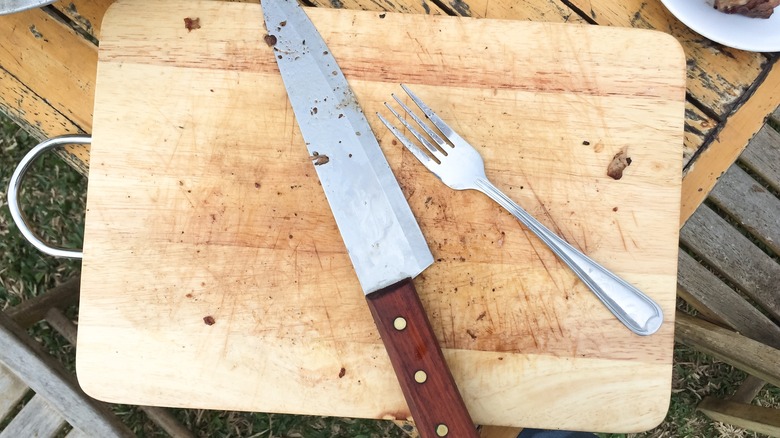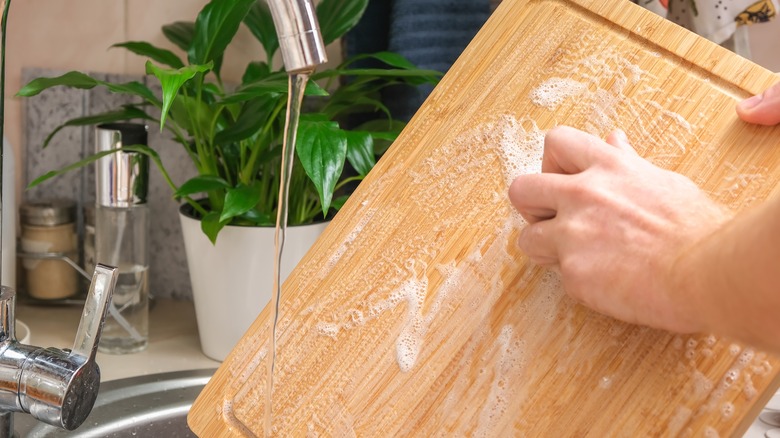The Unlikely Household Essential That'll Revive Your Dirty Wooden Cutting Board
A cutting board made from wood can be a great choice if you want something sturdy that will hold up over time, but it's important to keep it clean. Washing it with dish soap and warm water is good for everyday purposes, but it isn't likely to get rid of stubborn stains. That's where hydrogen peroxide comes in. Though it may seem like a surprising way to use hydrogen peroxide, this hack will get your cutting board back to looking brand new in no time.
If you don't clean your wooden cutting boards on a regular basis, you're allowing germs to build up. It may not look bad to the eye, but a bacteria-infested cutting board could make you ill, a situation most people would definitely rather avoid. As mentioned, soap and water are fine for day-to-day washing, but hydrogen peroxide is ideal for ensuring your wooden cutting boards are up to scratch. Best of all, this hack only requires a bottle of 3% hydrogen peroxide and a cloth or sponge.
This simple hack will sanitize your cutting board in no time
To get your wooden cutting board sparkling clean once more, take a bottle of 3% hydrogen peroxide and pour a decent amount over the board. We recommend wearing gloves while doing this so you don't end up pouring the peroxide all over your hands. Use a clean sponge or cloth to ensure the liquid covers the entirety of the cutting board. Leave the hydrogen peroxide to work its magic for five or so minutes. You'll know it's working when it starts to make a fizzing sound or bubbles up. After the allotted time is up, rinse off all the hydrogen peroxide with hot water.
It's important to dry the cutting board thoroughly after it has been washed. Putting away a damp cutting board can lead to mildew, another issue that you definitely want to avoid. Though this hack is pretty self-explanatory, there is an important thing to keep in mind, and that's to buy 3% hydrogen peroxide. Stronger types of hydrogen peroxide are used to bleach hair amongst other things, and are far too strong for this task. The peroxide that's 3% is the one that's most likely to be sold in a store anyway, but always double-check the bottle.

